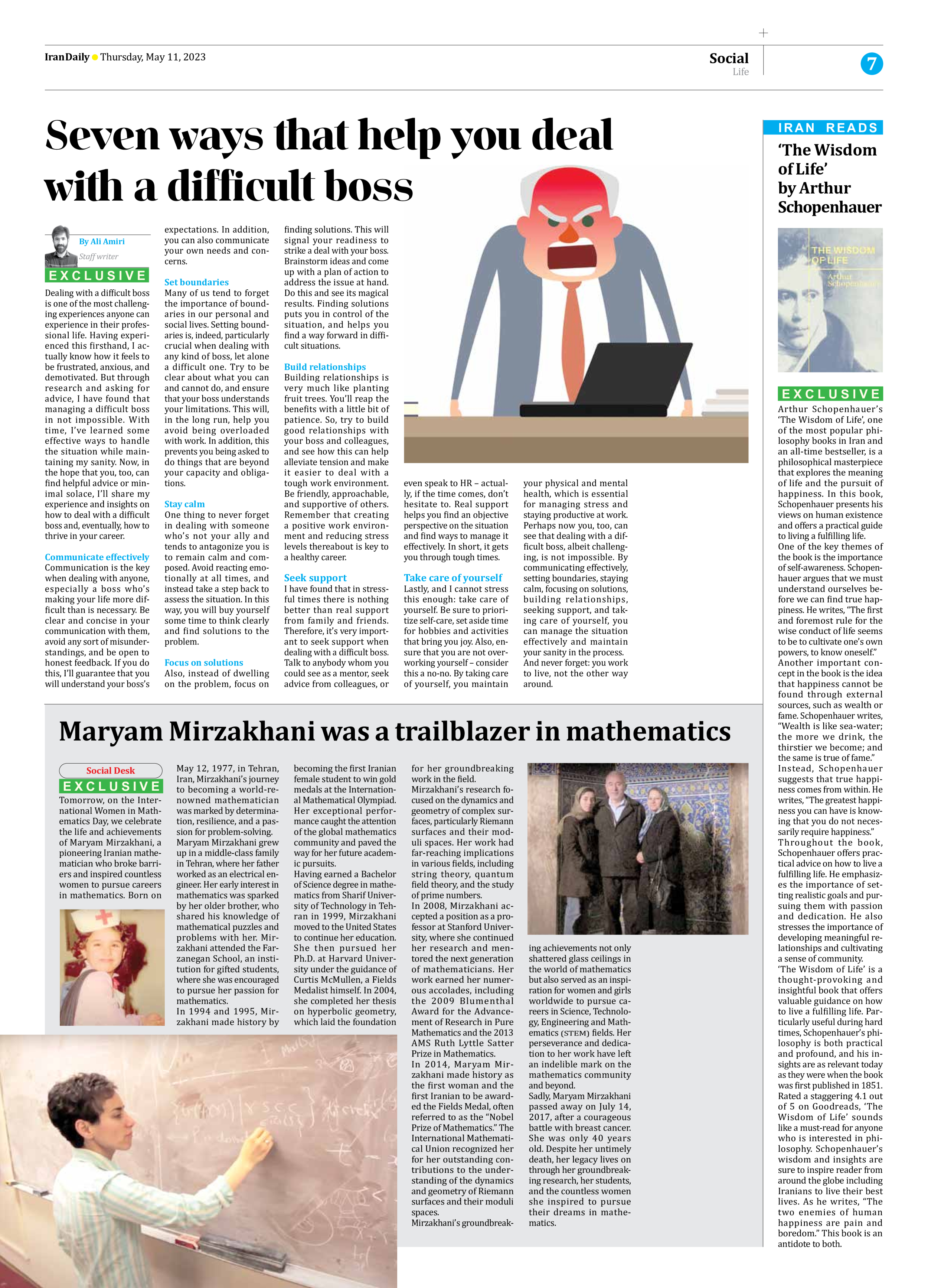
Maryam Mirzakhani was a trailblazer in mathematics
Tomorrow, on the International Women in Mathematics Day, we celebrate the life and achievements of Maryam Mirzakhani, a pioneering Iranian mathematician who broke barriers and inspired countless women to pursue careers in mathematics. Born on May 12, 1977, in Tehran, Iran, Mirzakhani’s journey to becoming a world-renowned mathematician was marked by determination, resilience, and a passion for problem-solving.
Maryam Mirzakhani grew up in a middle-class family in Tehran, where her father worked as an electrical engineer. Her early interest in mathematics was sparked by her older brother, who shared his knowledge of mathematical puzzles and problems with her. Mirzakhani attended the Farzanegan School, an institution for gifted students, where she was encouraged to pursue her passion for mathematics.
In 1994 and 1995, Mirzakhani made history by becoming the first Iranian female student to win gold medals at the International Mathematical Olympiad. Her exceptional performance caught the attention of the global mathematics community and paved the way for her future academic pursuits.
Having earned a Bachelor of Science degree in mathematics from Sharif University of Technology in Tehran in 1999, Mirzakhani moved to the United States to continue her education. She then pursued her Ph.D. at Harvard University under the guidance of Curtis McMullen, a Fields Medalist himself. In 2004, she completed her thesis on hyperbolic geometry, which laid the foundation for her groundbreaking work in the field.
Mirzakhani’s research focused on the dynamics and geometry of complex surfaces, particularly Riemann surfaces and their moduli spaces. Her work had far-reaching implications in various fields, including string theory, quantum field theory, and the study of prime numbers.
In 2008, Mirzakhani accepted a position as a professor at Stanford University, where she continued her research and mentored the next generation of mathematicians. Her work earned her numerous accolades, including the 2009 Blumenthal Award for the Advancement of Research in Pure Mathematics and the 2013 AMS Ruth Lyttle Satter Prize in Mathematics.
In 2014, Maryam Mirzakhani made history as the first woman and the first Iranian to be awarded the Fields Medal, often referred to as the “Nobel Prize of Mathematics.” The International Mathematical Union recognized her for her outstanding contributions to the understanding of the dynamics and geometry of Riemann surfaces and their moduli spaces.
Mirzakhani’s groundbreaking achievements not only shattered glass ceilings in the world of mathematics but also served as an inspiration for women and girls worldwide to pursue careers in Science, Technology, Engineering and Mathematics (STEM) fields. Her perseverance and dedication to her work have left an indelible mark on the mathematics community and beyond.
Sadly, Maryam Mirzakhani passed away on July 14, 2017, after a courageous battle with breast cancer. She was only 40 years old. Despite her untimely death, her legacy lives on through her groundbreaking research, her students, and the countless women she inspired to pursue their dreams in mathematics.







